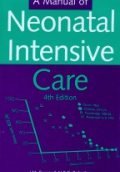- Presents the most comprehensive H-bond interpretation in terms of classical chemical bonding theories.
- Provides full description and careful classification of all types of H-bonds, including the less common ones formed by transition metals, and with particular emphasis on strong H-bonds.
- Combines classical thermodynamics and structural crystallography to relate H-bond energies and geometries.
- Includes relationships between H-bond enthalpies and Gibbs free energies, and discusses binding constants in gas phase, non-polar solvents, crystals, and aqueous solution.
- Provides detailed analysis of the functional role played by strong H-bonds in the mechanisms of important chemical and biochemical processes, such as enzymatic catalysis, transport through cell membranes, crystal design, prototropic tautomerism, and molecular mechanisms of functional materials.
Hydrogen bond (H-bond) effects are known: it makes sea water liquid, joins cellulose microfibrils in trees, shapes DNA into genes and polypeptide chains into wool, hair, muscles or enzymes. Its true nature is less known and we may still wonder why O-H...O bond energies range from less than 1 to more than 30 kcal/mol without apparent reason. This H-bond puzzle is re-examined here from its very beginning and presented as an inclusive compilation of experimental H-bond energies and geometries.
New concepts emerge from this analysis: new classes of systematically strong H-bonds (CAHBs and RAHBs: charge- and resonance-assisted H-bonds); full H-bond classification in six classes (the six chemical leitmotifs); and assessment of the covalent nature of strong H-bonds. This leads to three distinct but inter-consistent models able to rationalize the H-bond and predict its strength, based on classical VB theory, matching of donor-acceptor acid-base parameters (PA or pKa), or shape of the H-bond proton-transfer pathway.
Applications survey a number of systems where strong H-bonds play an important functional role, namely drug-receptor binding, enzymatic catalysis, ion-transport through cell membranes, crystal design and molecular mechanisms of functional materials.
Readership: Researchers, lecturers, and postgraduates in crystallography, chemistry, molecular biology and pharmacology, molecular material sciences, and solid-state physics.
